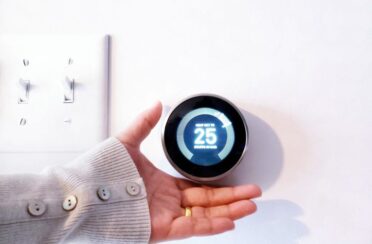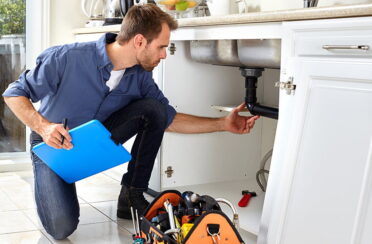Tankless water heaters can provide comfortable, seamless water flow with significantly reduced energy consumption, making your water bills and water-heating bills much more manageable. In order to size a system for your home, however, you need to consider flow rate and temperature.
Tankless water heaters are available in a variety of sizes (measured in gallons per minute, or GPM), and can accommodate water demands ranging from one sink to your whole house’s water needs. What you need to consider is how you use water. Your current water heater is probably not sized to meet all the water demands of your home simultaneously: in other words, you probably don’t run the shower, kitchen and bathroom sinks, plus the dishwasher and washing machine all at the same time.
When sizing tankless water heaters, you need to take into account the number of items in your home that will be making demands on that one tankless unit. For example, to supply hot water for a bathroom, the tankless unit would need to accommodate the sink (at about 0.75 GPM) and the shower (at 2.5 GPM). That would mean the flow rate required for both to operate at the same time is 3.25 GPM. To supply hot water to a dishwasher and a washing machine, rate and combine their GPM accordingly, and then size a system to match that output.
The next factor to determine is the temperature rise. Water will come into the tankless system’s pipes at a certain temperature, probably around 50 degrees Fahrenheit. Generally, most hot water is heated to about 120 degrees Fahrenheit. That means there will be a temperature rise of roughly 70 degrees (calculated by subtracting the incoming temperature from the desired temperature).
Based on this information, you can select a system that will reach the desired temperature rise with the gallons per minute that you require. Keep in mind that gas and electric tankless systems will differ in how quickly they can raise the water temperature. Another element to consider: if you have a tankless unit supplying a kitchen and a bathroom, for example, raising the flow rate or lowering the temperature can cause even lower temperatures at the supply location that is farthest from the tankless unit.
An HVAC contractor can help evaluate flow rate and temperature rise for tankless water heaters. Contact the experts at Arpi’s for a consultation.
Our goal is to help educate our customers about energy and home comfort issues (specific to HVAC systems). For more information, click here to download our free Home Comfort Resource guide.
Arpi’s services Calgary, Alberta. To get started, check out our website or see our special offers.


